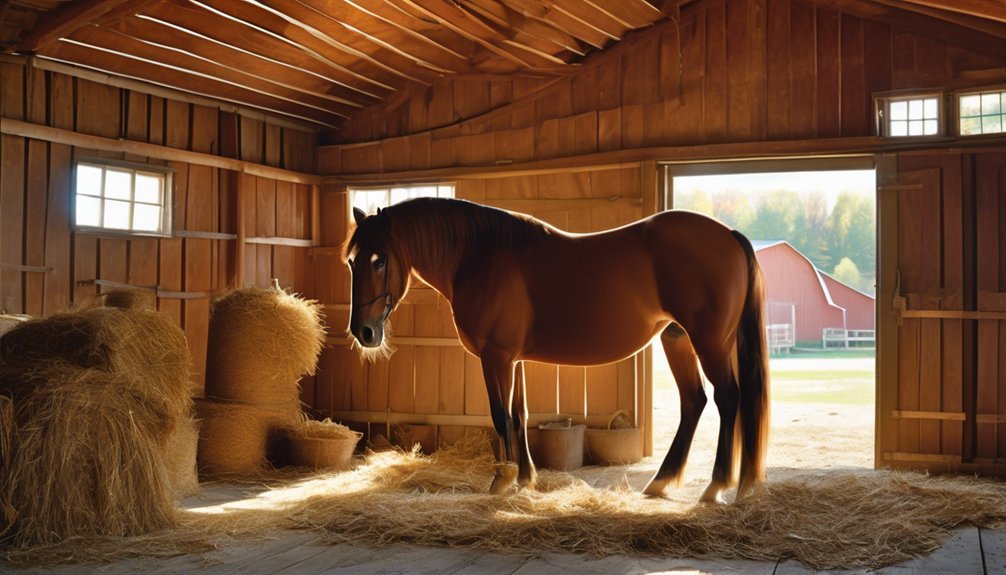
Grooming your horse could feel like a battle of wills, but it doesn't have to be. You can create a positive experience that both you and your horse look forward to. By understanding your horse's behavior and gradually introducing grooming, you can foster a bond built on trust and comfort. Curious about how to get started and what techniques will make a difference? Let's explore the steps you can take to change your grooming sessions for the better.
Key Takeaways
- Observe your horse's body language to identify comfort levels and adjust your grooming approach accordingly.
- Create a calm environment by minimizing distractions and using soft, reassuring tones during grooming sessions.
- Start with short sessions focused on areas your horse is comfortable with, gradually introducing new areas as they relax.
- Use positive reinforcement techniques, such as treats or praise, to reward your horse for calm behavior during grooming.
- Select appropriate grooming tools that are comfortable for your horse, ensuring a positive and enjoyable grooming experience.
Understanding Your Horse's Behavior
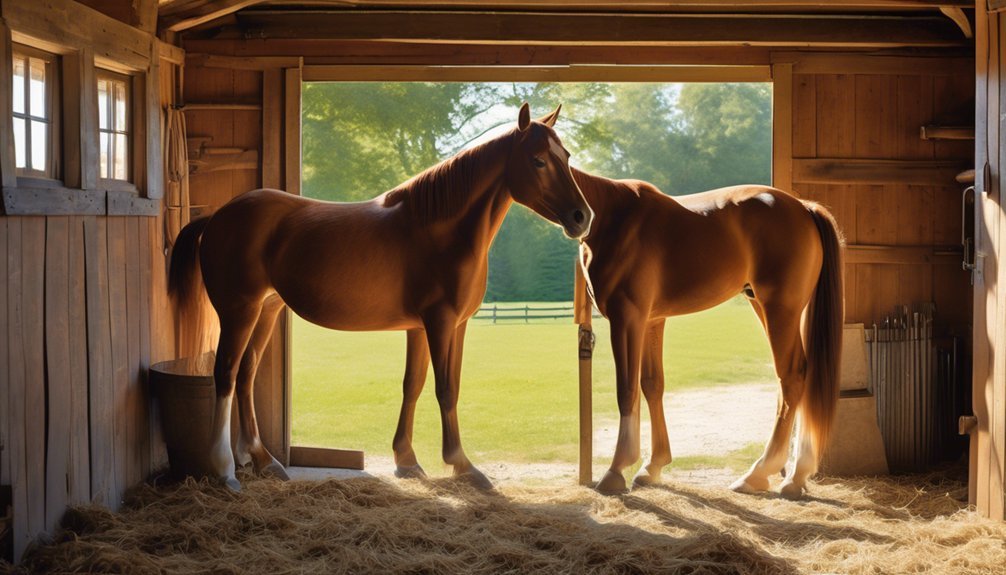
Understanding your horse's behavior is crucial for effective grooming, especially since every horse has its own personality and quirks. Pay close attention to their body language; it tells you so much about how they're feeling.
If your horse flinches or shifts away, they might be expressing fear responses. Notice their ears, tail, and eyes—these signals reveal their comfort levels. When you see signs of anxiety, it's essential to pause and reassess your approach.
Building trust takes time, and empathy goes a long way. Keep your movements gentle and calm, and speak softly to reassure them. By tuning into their emotions and needs, you'll foster a deeper bond, making grooming a more enjoyable experience for both of you.
Establishing a Calm Environment
Creating a calm environment is essential for effective grooming, as it helps your horse feel secure and relaxed. To establish a soothing grooming atmosphere, think about your surroundings. Choose a quiet spot free from distractions, where both you and your horse can feel at ease.
| Tips for a Calm Environment | Benefits of a Quiet Surrounding |
|---|---|
| Use soft, reassuring tones | Reduces stress for your horse |
| Maintain a slow, gentle pace | Builds trust between you two |
| Limit sudden movements | Encourages your horse to relax |
These small changes can make a significant difference. By fostering a serene space, you're not just grooming; you're creating a bond built on trust and comfort. Your horse will appreciate it.
Choosing the Right Grooming Tools
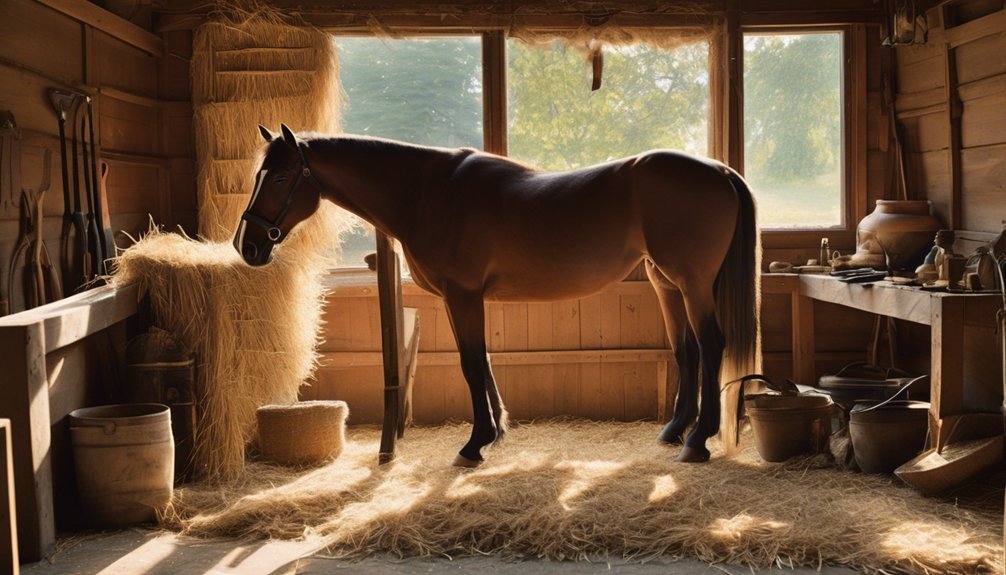
Once your horse is calm and comfortable, it's time to focus on the grooming tools you'll use.
Choosing the right grooming tool types can make all the difference in your horse's experience. Conduct a tool comfort assessment to ensure everything feels right for your horse.
Here's a handy list to guide you:
- Curries: Start with rubber or plastic curry combs for loosening dirt and hair.
- Body Brushes: Use soft-bristled brushes for a gentle touch on sensitive areas.
- Hoof Picks: Essential for maintaining hoof health; select one with a comfortable grip.
- Mane and Tail Comb: Choose wide-toothed options to detangle without pulling.
Introducing Grooming Gradually
As you begin introducing grooming to your horse, it's important to take things slow and pay attention to their reactions.
Start with short grooming sessions, perhaps just a few minutes long, focusing on areas your horse seems comfortable with. Gradual exposure is key; try brushing their neck or shoulder first, as these spots are often less sensitive.
Watch for any signs of discomfort, and don't rush. If they seem relaxed, you can gradually move to other areas, like the legs or belly.
Always remember to speak softly and offer gentle touches, creating a soothing environment.
Using Positive Reinforcement Techniques
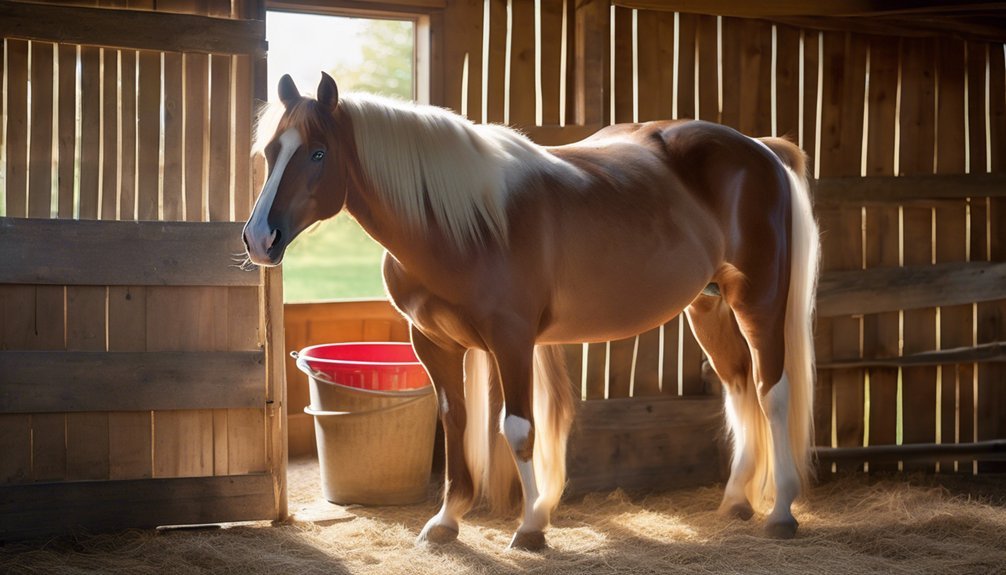
Many horse owners find that using positive reinforcement techniques can significantly enhance their grooming sessions. By employing reward-based strategies, you can create a more enjoyable experience for both you and your horse.
Here's how to get started with clicker training:
- Choose a reward – Find a treat your horse loves or use gentle praise.
- Introduce the clicker – Click whenever your horse remains calm during grooming.
- Reward immediately – After clicking, give the treat to reinforce the behavior.
- Gradually increase duration – As your horse becomes more comfortable, extend the grooming time before you click.
This approach fosters trust and encourages your horse to associate grooming with positive experiences.
As you bond, you'll both look forward to these moments together.
Identifying Sensitive Areas and Adjusting Approach
Identifying sensitive areas on your horse's body is crucial for a successful grooming experience. Pay close attention to your horse's body language; their ears, tail, and even muscles can tell you a lot.
Look for signs of discomfort, like flinching or shifting weight. Sensitive zones often include the belly, legs, and around the eyes. When you encounter these areas, adjust your approach. Use softer brushes or gentler strokes, allowing your horse to become accustomed to your touch.
Take your time and observe their reactions closely. If they seem uneasy, pause and reassure them with a calm voice or gentle pat. Building trust in these vulnerable moments creates a more enjoyable grooming experience for both of you.
Incorporating Grooming Into Daily Routine
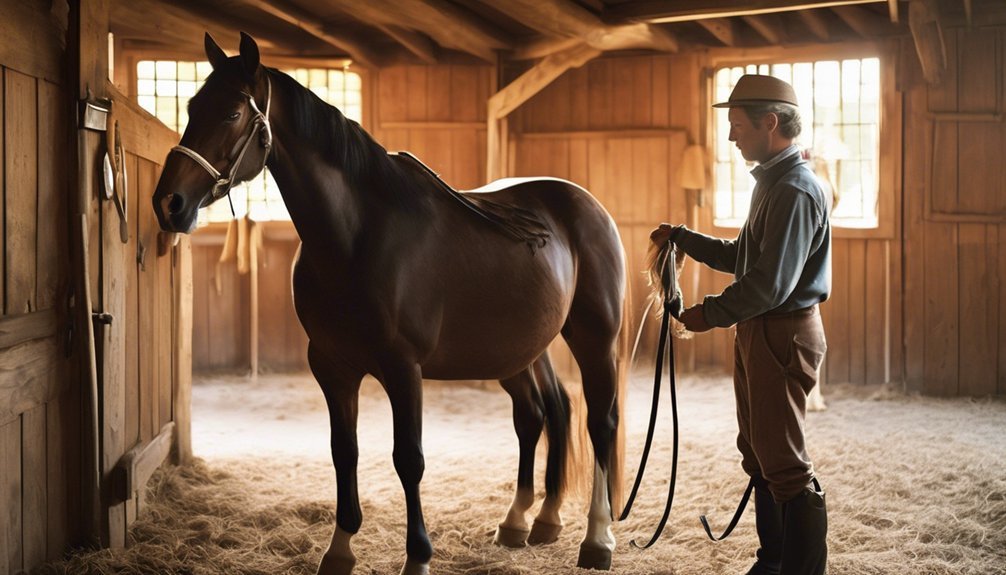
Creating a consistent grooming routine not only helps your horse look their best but also strengthens the bond you share.
By incorporating grooming into your daily routine, you foster trust and comfort.
Here's how to establish a grooming schedule that enhances your daily bonding:
- Set a Time: Choose a specific time each day to groom, making it a predictable part of your horse's day.
- Start Slow: Begin with gentle strokes, allowing your horse to acclimate to your touch.
- Use Positive Reinforcement: Offer treats or praise during and after grooming sessions to create positive associations.
- Be Attentive: Pay attention to your horse's responses, adjusting your approach to ensure they feel safe and relaxed.
These steps will deepen your connection and make grooming a cherished daily ritual.
Monitoring Progress and Making Adjustments
As you progress through your grooming routine, it's essential to keep an eye on your horse's reactions and overall behavior. Regular progress tracking helps you identify any changes in your horse's comfort level.
Take note of his body language; is he relaxed, or does he seem tense? Conducting a behavior assessment after each session can guide your adjustments. If he flinches or moves away, it might be time to change your approach or use different tools.
Always celebrate small victories. If he stands calmly for brushing, reward him with a gentle pat or a treat. This fosters trust and reinforces positive experiences, helping your horse learn to enjoy grooming.
Frequently Asked Questions
How Long Should Grooming Sessions Last for Best Results?
For best results, keep your grooming sessions around 20 to 30 minutes. This duration allows you to use effective grooming techniques while ensuring your horse remains engaged and comfortable, fostering a deeper bond between you both.
Can I Groom My Horse Outdoors or Indoors?
Imagine a cozy café, where fresh air invigorates your senses. Similarly, grooming outdoors offers benefits: natural light, fresh scents, and a calming atmosphere. However, indoors can provide a controlled, comfortable environment—both have their unique advantages.
What Signs Indicate My Horse Is Enjoying Grooming?
Watch for relaxed body language, like lowering their head or softening their eyes. Positive reactions, such as leaning into your touch or nudging you gently, show your horse is enjoying the grooming experience with you.
How Often Should I Groom My Horse Each Week?
Think of grooming as a gentle rain nourishing your horse's spirit. Aim for at least three times a week; the grooming benefits—bonding, health, and shine—will make both your hearts bloom with joy and trust.
What Should I Do if My Horse Resists Grooming?
When your horse resists grooming, try desensitization techniques gradually. Use positive reinforcement, like treats or gentle praise, to create a more comfortable experience. Observe their body language, and be patient; trust will develop over time.
Conclusion
By patiently following these steps, you'll transform grooming from a chore into a cherished bonding experience between you and your horse. With each gentle stroke, you're not just removing dirt but building trust that's stronger than a mountain. Remember, every horse is unique, so stay attuned to their needs and feelings. As you progress, you'll find that grooming can be a soothing ritual that both you and your horse look forward to every day.





